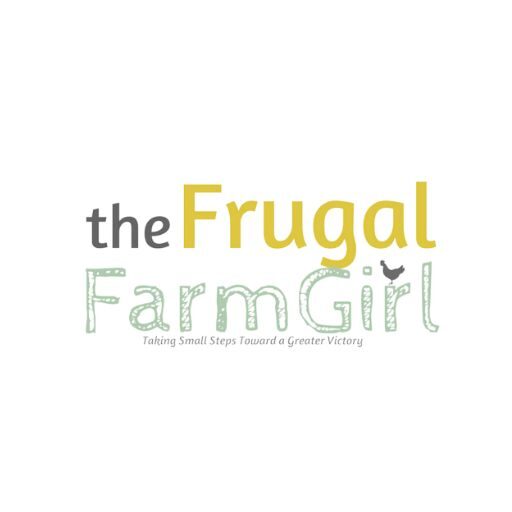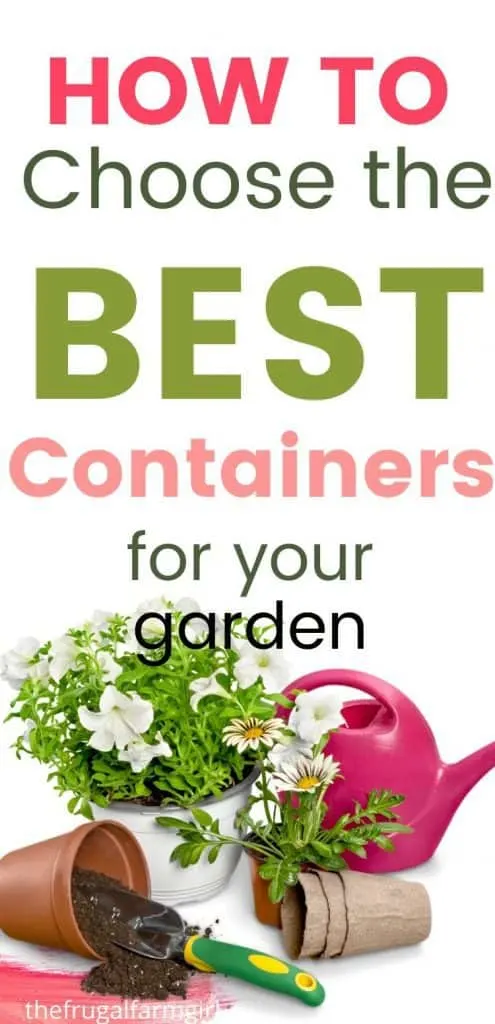Potted plants are a great way to bring beauty and greenery to your yard, especially if you don’t have space for a traditional garden. Or if you are reaching an age where a container filled with flowers is just your speed this year.
Every year I question whether I want to add more to a garden or start a new one. And instead, I find myself filling more pots because of this cheap trick.
Or it’s just because there are so many benefits to container gardening?
However, caring for potted plants can be a bit trickier than caring for plants that are in the ground.

Here are the top 5 mistakes to avoid when caring for potted plants in your yard:
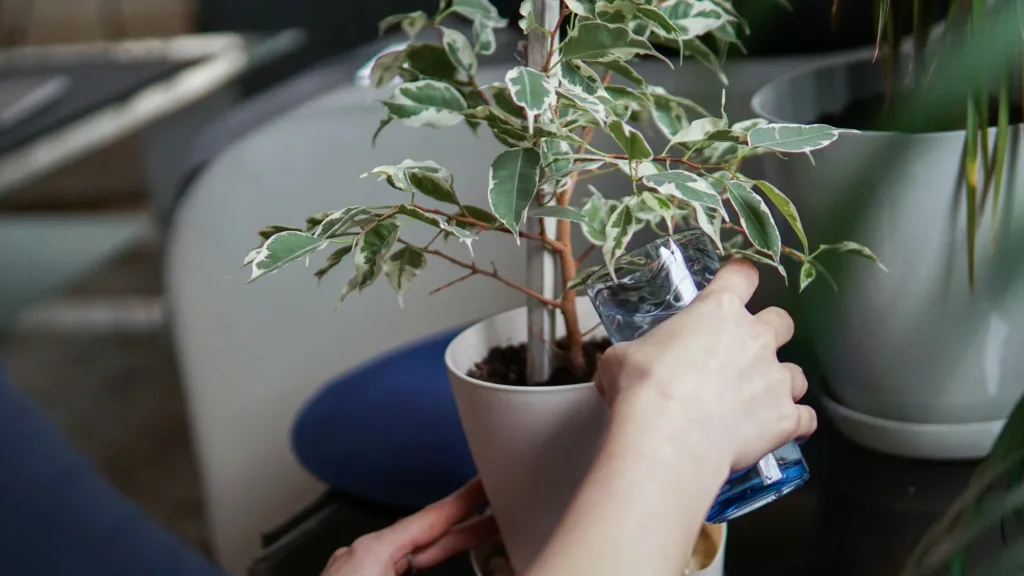
Overwatering
Potted plants are prone to overwatering due to their limited soil and root space. Check the moisture of your potting mix before adding any additional water.
Be careful not to oversaturate the soil, or your plant may start to suffer from root rot!
You will notice a very putrid smell when you have overwatered a container plant. We like to call that smell pond scum.
I find it happens when I forget to bring a pot in for the winter, and then it sits out all spring and draws me to it with its smell.
The same can be said with underwatering.
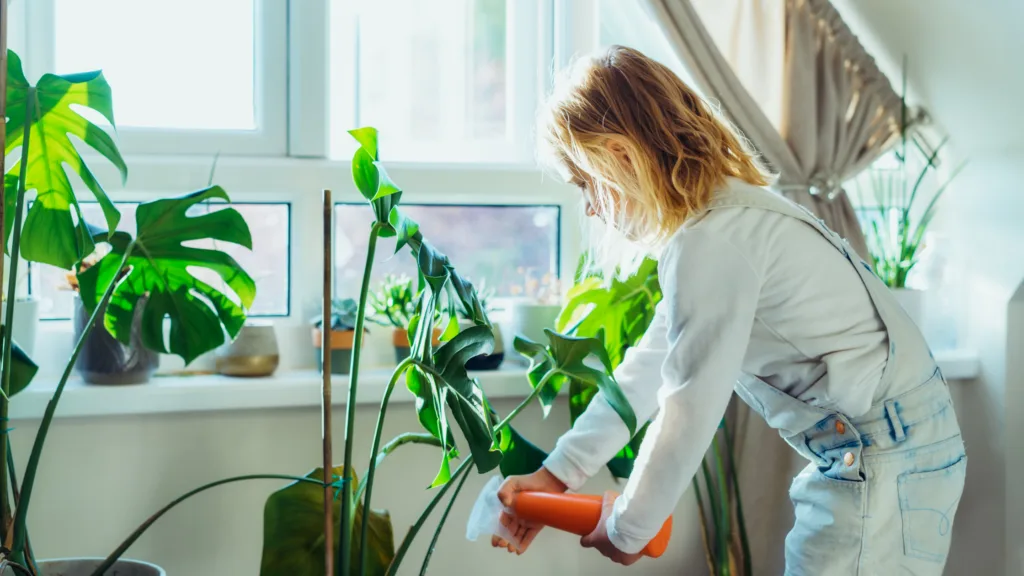
Here are some basic steps for watering your potted plants:
Check the soil moisture – Before watering your plant, check to see if the soil is already moist by sticking your finger into the soil up to the second knuckle.
Add water – If the soil feels dry, slowly add lukewarm water until it begins to drain out of the bottom of the pot. Make sure not to over-water, as this can drown your plant.
Allow drainage – Proper drainage is essential for potted plants; make sure there are holes in the bottom so that any excess water can escape and avoid causing root rot or other issues.
Monitor soil moisture levels – After watering, monitor how quickly the soil dries out and adjust your watering schedule accordingly; if you have to water more frequently, consider switching to a larger pot with better drainage capabilities.
You can grab a few of these moisture meters on Amazon if you aren’t sure.
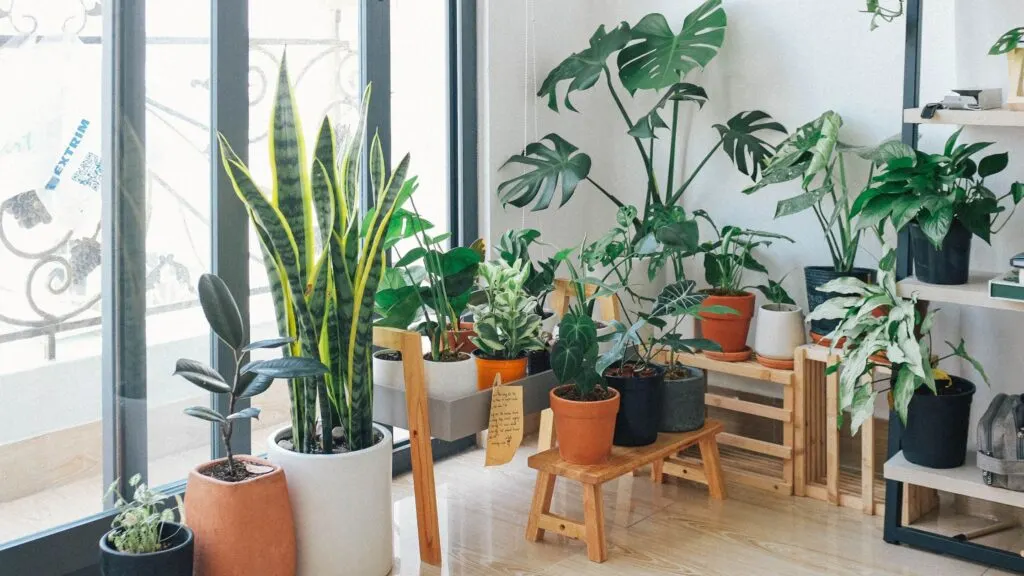
Poor Drainage
Poor drainage can still be an issue, even if you are careful not to overwater. Choose a pot with adequate drainage holes and use a quality potting mix designed for containers.
Look for materials that will provide good drainage and aeration, such as terracotta pots or plastic planters with holes at the bottom. Wooden planters can also be used but make sure they have adequate drainage.
Other materials to consider include concrete, metal, and recycled materials such as old shoe boxes. Now get creative and pick out some containers that add to your home’s aesthetic!
If you are picking up a unique pot or finding something at a yard sale, you can easily poke or even drill holes into it, depending on the type of material.
Don’t try to think if it doesn’t have a hole, it will be fine, and you will water it carefully; I’ve done it, and it’s so hard to keep it balanced. Go for the drain hole.
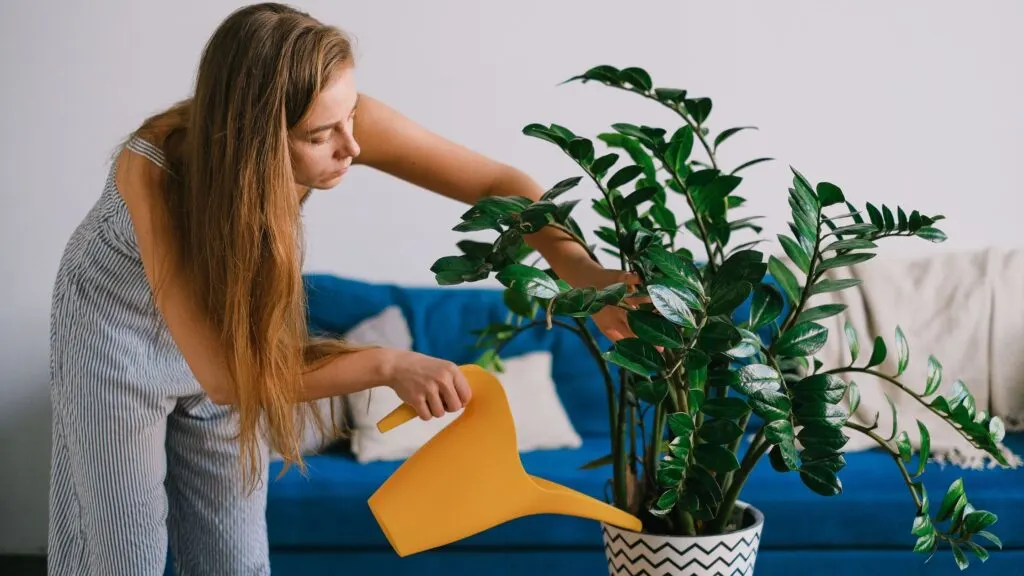
Not Pruning
Many people don’t think about pruning their potted plants, but it’s essential to keeping them healthy. Pruning helps to remove dead or damaged leaves and encourages new, healthy growth.
Pruning is important in caring for potted plants, as it helps maintain their health and beauty. Generally, it’s advised to prune potted plants every few months or so.
This allows you to remove dead leaves, branches and stems and encourage new growth. Additionally, keep a close eye on your plants for any signs of disease or damage that might require more frequent pruning sessions. You won’t have to worry about this as much if they stay indoors.
If you are growing plants in containers outside, and it’s warm, you may need to prune more often. I like to check my outdoor potted plants every week.
Should I use Special Tools for Pruning
Yes, using the right tools for pruning potted plants is important. Sharp shears or scissors are essential for making precise cuts and avoiding damage to the plant.
So far, this one has been a big help for all my outdoor and indoor plants. But if you are looking for a smaller one like this.
Additionally, using long-handled tools such as loppers or pruners will prevent you from reaching into the pot and potentially cause harm to any delicate roots.
I made the mistake of thinking I could pull a dead leaf from one of my potted plants, and instead, I pulled the root right up.
I’ve learned over the years how important sharp cuts are to plants.
Each type of tool has its own advantages, so make sure to choose one that best fits your needs.
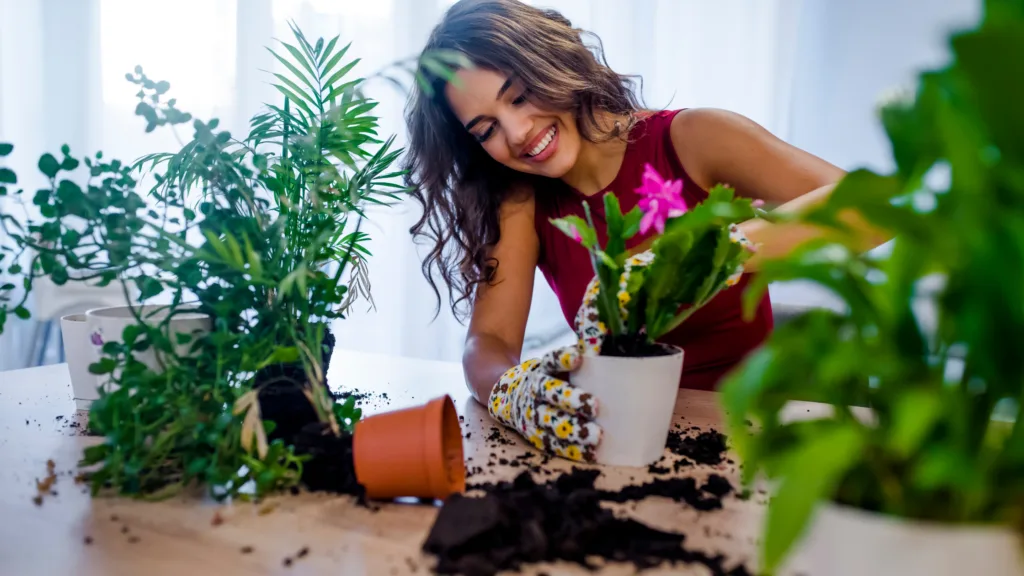
Not Repotting
As your potted plants grow, they may need to be repotted into a larger pot with fresh soil mix. If a plant grows out of its current container, it may be time to upgrade!
What’s the Best Potting Soil to Use?
A soilless potting mix is often recommended for good drainage. Soilless mixes are usually made from ingredients like peat moss, perlite, vermiculite, and other materials.
These mixes allow for good aeration and drainage, essential for optimal plant health. Plus, they are a lighter soil which makes moving your plants from room to room easier.
If you aren’t moving your plants around to freshen up your home using what you have, try it today. It always amazes me how moving a few plants to a different spot changes the feel of the room.
Additionally, it’s crucial to choose a potting mix specifically suited to the type of plants you are growing to ensure they get the proper nutrition they need.
Repotting a potted plant is important to its maintenance, as it allows the roots to get adequate space and oxygen.
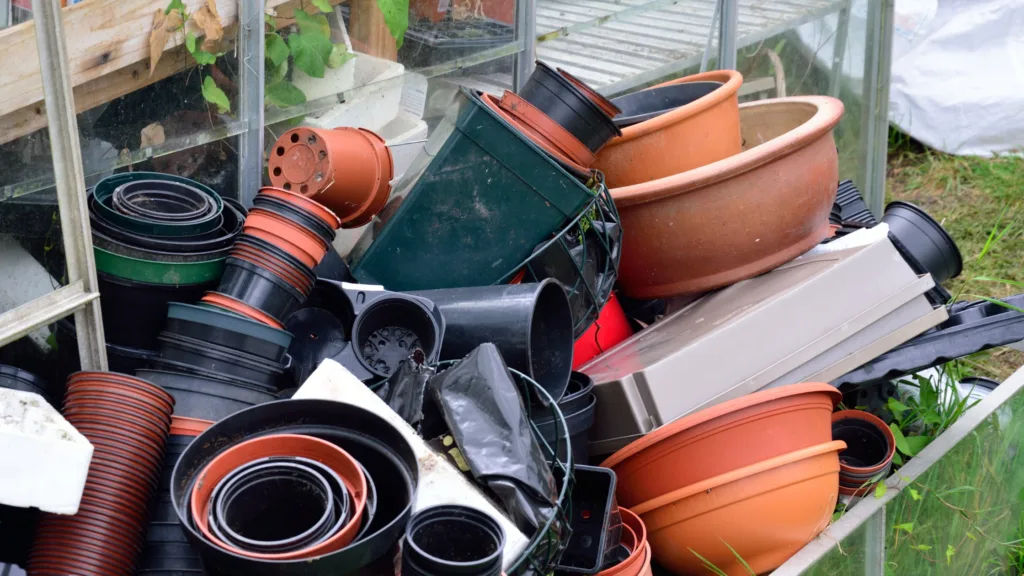
Here are some steps to repot your potted plant properly:
Choose a new pot – Select a container that provides enough room for the plant’s roots to grow, with enough drainage holes at the bottom. Ensure the new pot is not too large or too small; a pot that’s too big can cause waterlogging and slow down root growth.
Add potting soil – Fill the new pot halfway with fresh, nutrient-rich soil before transferring your plant into it.
Gently remove the old pot – Slide out the old pot gently, taking care not to pull on or tear any of the roots in the process.
Place & cover with soil – Carefully place the root ball of your plant in its new home, then cover it up with more soil until it’s filled up near the top but not overflowing.
Water thoroughly – Let your newly-potted plant settle in its new environment by watering it thoroughly until excess water starts dripping out of the drainage holes at the bottom of the container.
Lack of Sun
All plants need adequate sunlight to thrive, so ensure your potted plants get enough sun exposure daily. If necessary, move them around throughout the day so they get an even amount of sunlight.
This article here has more tips for you to learn how to start your container garden.
Not Fertilizing
Potted plants need regular fertilization to stay healthy and thrive. Choose a fertilizer specifically designed for container plants, and then follow the directions on the package carefully when applying it. This is important if you are keeping your potted plants indoors.
In Western NY, I will bring my indoor plants out for a bit in the warmer months. After the summer, I like to give them a fresh pot of soil and any fertilizers they may need to last all winter.
This is also the time of year all the pots and containers for plants go on clearance, and you know how much I love my clearance deals.
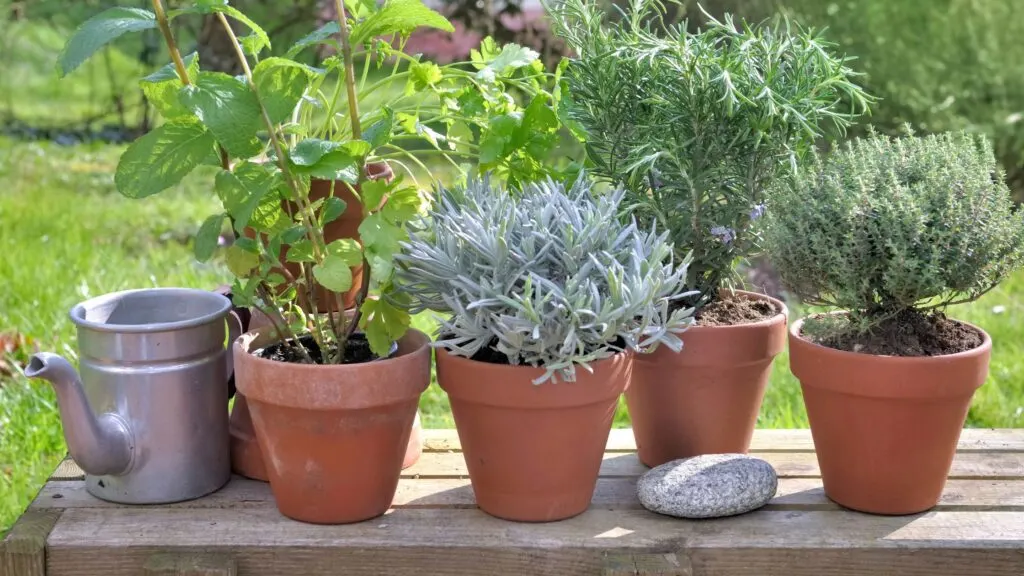
How many plants are too many in a container?
The number of plants you can grow in a container depends on the container’s size, the plants’ size, and their growing habits.
As a general rule, overcrowding your container can lead to several issues, such as competition for water and nutrients, root rot, and stunted growth. Therefore, giving your plants enough space to grow and thrive is essential.
- Consider the size of the container: The size of the pot will determine how many plants you can comfortably grow. A larger container will allow you to grow more plants than a smaller one. A general rule of thumb is to allow 1 gallon of soil per plant.
- Consider the size of the plants: The size you’re growing will also impact how many you can grow in a container. Large plants like tomatoes or peppers require more space than smaller plants like herbs or lettuce.
- Consider the plants’ growing habits: Some plants have a compact growth habit, while others are more sprawling. It’s essential to consider how much space each plant needs to grow and allow for adequate spacing between them.
As a general guideline, it’s best to avoid overcrowding your container and aim for a plant density that allows each plant enough room to grow and receive adequate nutrients, water, and sunlight.
For example, in a 14-inch container, you may comfortably grow 3-4 small or 1-2 larger plants. Always check the specific plant’s growing requirements to ensure you are not overcrowding the container.
Here are some plants that typically do well in containers:
These are just a few examples of plants that do well in containers, but there are many more to choose from depending on your climate, available space, and personal preferences.
When selecting plants for container gardening, choose varieties well-suited to your growing conditions and container size.
Herbs: Many herbs are well-suited to container gardening, including basil, parsley, thyme, and rosemary. They can be grown indoors or outdoors and require minimal maintenance.
Tomatoes are a popular container plant and can be grown in large pots or grow bags. They require a lot of sunlight, regular watering, and support but can yield a bountiful harvest.
Peppers: Like tomatoes, peppers are also an excellent option for container gardening. They come in various varieties, from sweet to spicy, and can thrive in a sunny location with regular watering.
Strawberries: Strawberries can be grown in pots or hanging baskets and are an excellent choice for small spaces. They require well-draining soil, regular watering, and full sun to produce sweet, juicy fruit.
Lettuce and other salad greens: Many varieties of lettuce and salad greens, including spinach and arugula, are well-suited to container gardening. They can be grown in shallow containers and require regular watering and partial shade.
Succulents: Succulents are popular container plants because they require minimal watering and can thrive in various lighting conditions. They come in many varieties and can be combined to create a stunning display.
Read this for tips on how to start growing the easiest veggies!
When caring for potted plants in your yard, avoiding common mistakes like overwatering, not repotting and pruning incorrectly, and providing insufficient sunlight is essential.
By caring for your plants properly, you can enjoy a beautiful garden full of healthy, vibrant plants all season long!
Happy planting!
